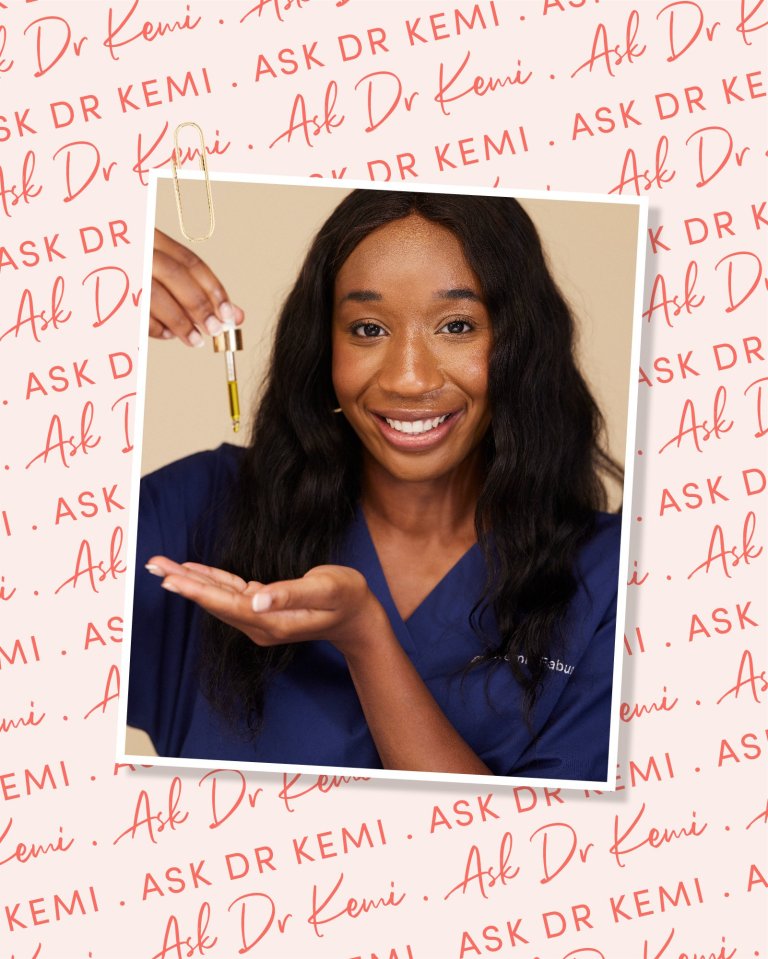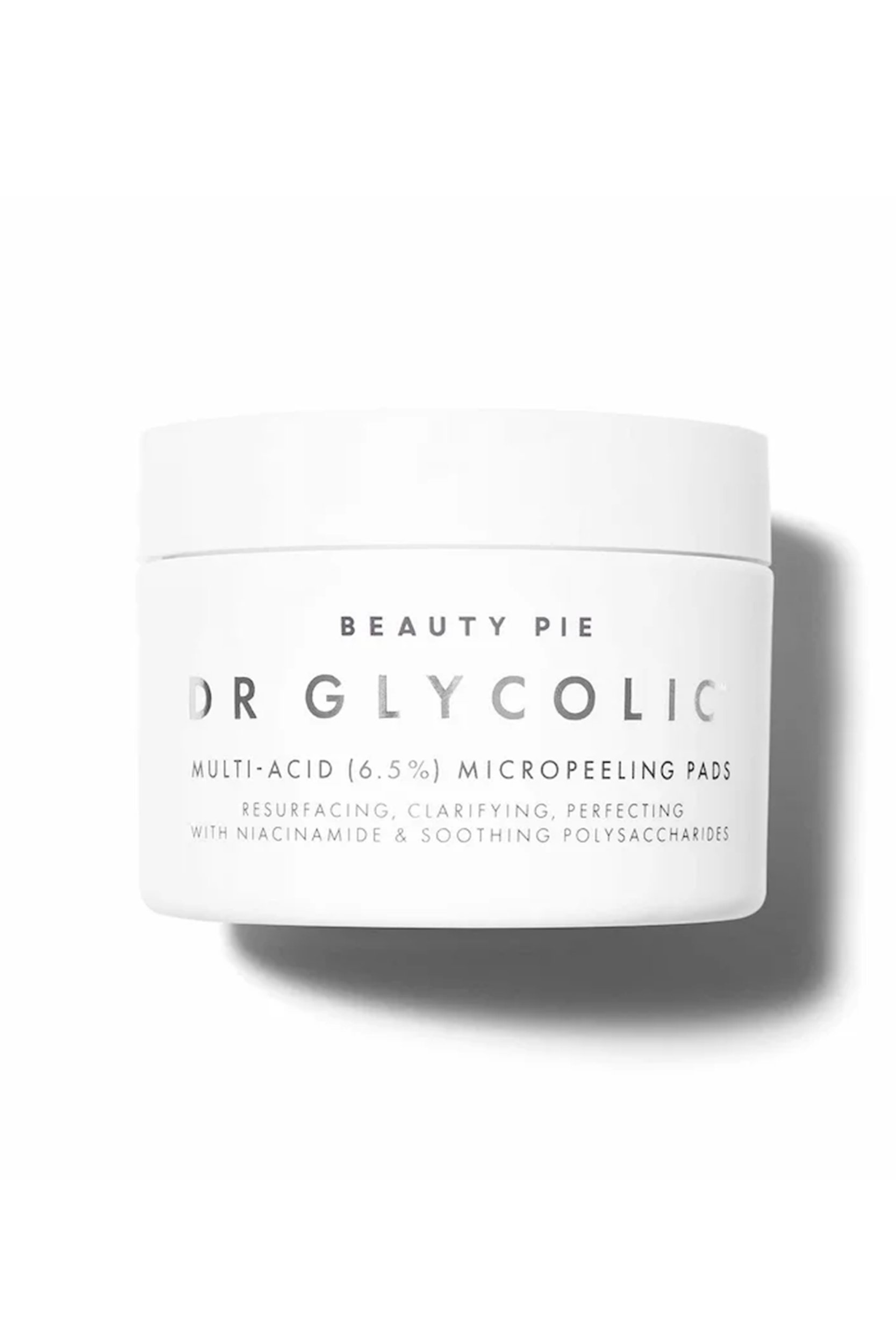Whether she’s answering your questions on different types of acne or explaining the safest way to squeeze a spot (if you must!), Dr Kemi shares her encyclopedic knowledge of everything skincare in her fortnightly Eliza column.
Stretch marks are totally normal. They are also nothing to be ashamed or embarrassed about; in fact, these days many of us are embracing our scars and feeling more confident than ever about them. And that’s completely OK.
What’s also OK is perhaps wanting to reduce their appearance a little or prevent new ones from forming; it’s all down to preference, as with many things. If you would like to learn more about the treatment and prevention of stretch marks, here’s everything you need to know…
What are stretch marks, exactly?
Stretch marks (also known as striae distense) occur when the tissue under the skin tears from rapid growth and over-stretching.
Because of this, they often occur in areas of the body with a higher fat content, such as around the chest, thighs, abdomen and bum.
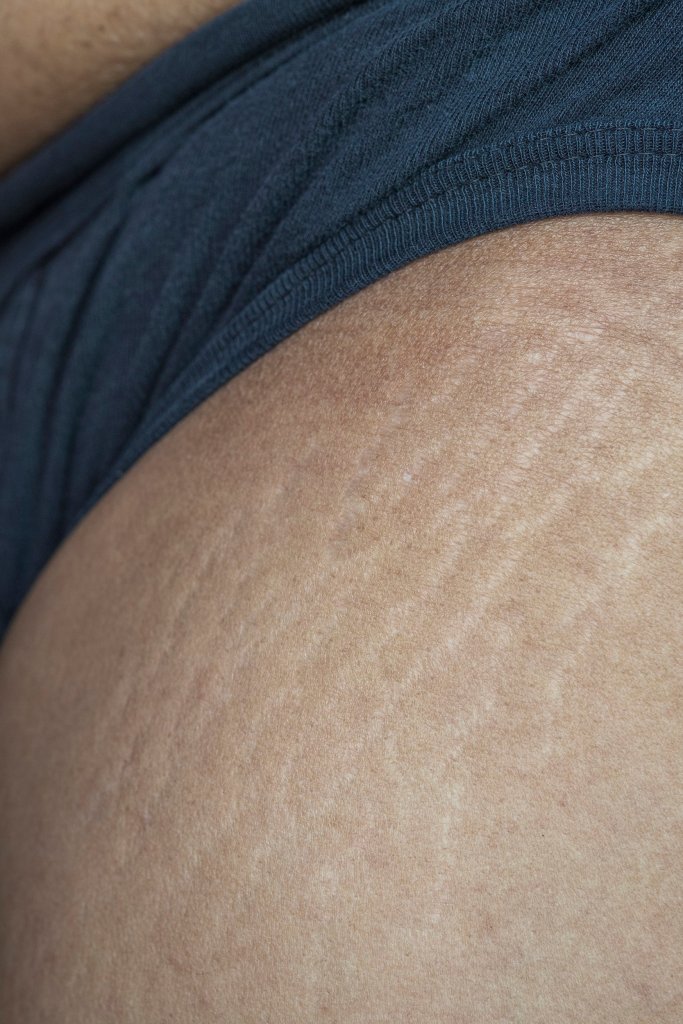
Whilst stretch marks are technically scars, there is still a lot of things you can do to manage the appearance of them, if that’s what you decide.
How do stretch marks form?
As you may know, there are three layers of skin:
The epidermis: the external barrier layer
The dermis: the middle structural layer
And the hypodermis: the lower insulation layer which keeps you warm
Stretch marks occur in the dermis, where collagen and elastin are found. These two tissues give structure and support to the skin and gives it that plump, supple elastic look.
When levels of collagen and elastin begin to fall, your skin becomes loose and begins to show signs of ageing. But when the collagen and elastin tear (i.e. from overstretching) the result is a stretch mark.
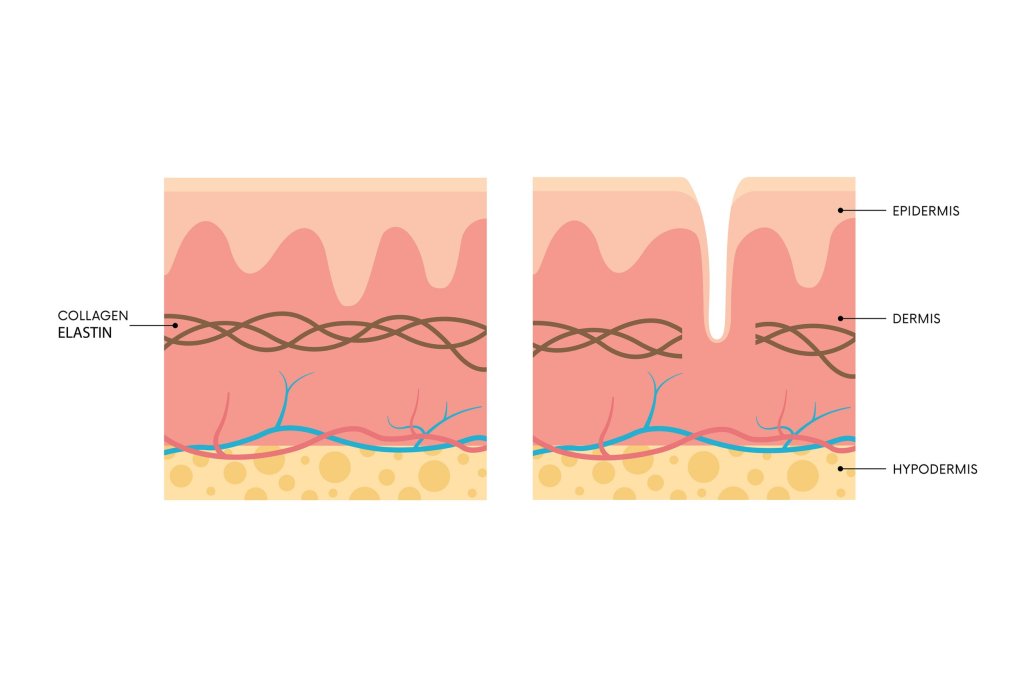
What factors cause the skin to stretch that fast?
There are four main causes:
- Growth spurts
- Rapidly gaining or losing fat
- Rapidly gaining muscle; for instance, if you are lifting weights at the gym
- Pregnancy
There are also certain factors that can lead to skin damage, which can make your skin more prone to forming marks. These include using anabolic steroids and excess levels of the hormone cortisol (the ‘stress hormone’).
How to prevent and manage stretch marks
So now we understand how stretch marks form, let’s discuss how to prevent and get manage them, if that’s the route you decide to go down. Once again, I should reiterate that stretch marks are completely normal, and there is no need to remove them if you instead choose to embrace them.
If you are losing or gaining weight, you should try to do so slowly and gradually in order to prevent stretch marks; a healthy rate of weight loss is 0.2-0.3kg per week.
The same goes for muscle; if you’re regularly weightlifting, it’s important to train a different muscle group each week, so that your muscles will grow in a uniform manner and not one area of skin will be prone to excessive growth.
When it comes to managing stretch marks, you really want to focus on stretch marks that have just formed. These are often red to begin with, and may be itchy or even uncomfortable.
After a while however, stretch marks turn white and become more permanent changes to the skin, making them more difficult to address.
Stretch mark treatments you could consider:
Doing nothing: stretch marks by themselves aren’t dangerous, and for most of us they’re part of the skin’s normal architecture when our body grows and changes shape.
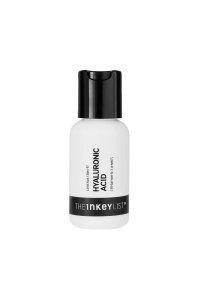
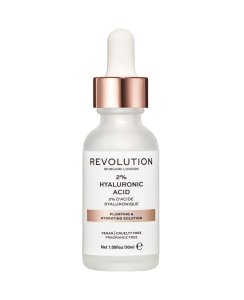
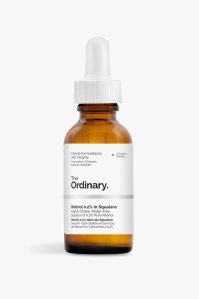
*Eliza may earn commission on sales from these product links
Topical products: topical tretinoin and hyaluronic acid are the only over-the-counter topical ingredients that have been proven to help reduce the appearance of new stretch marks. They do this by hydrating the skin and increasing skin cell renewal (remember that retinol can’t be used for stretch marks that are due to pregnancy).
Chemical peels: chemical peels that contain glycolic acid and TCA can help to stimulate collagen production. They also work well in conjunction with other advanced treatments.
Microneedling: this works by using a micro needling pen to cause controlled trauma to the skin. When the skin is traumatised in a controlled way, it promotes regulated healing, which reduces the visibility of the stretch mark.
Lasers: for instance, the pulsed-dye laser or carbon dioxide laser. These work by resurfacing the skin and promoting uniform healing.
Platelet rich plasma: this takes portions of your plasma and centrifuges out the growth factors, cytokines and peptides that help to promote wound healing before injecting them back into your skin.
If you have red stretch marks, you can start with topical treatments and chemical peels, but if you have white stretch marks, you may need a combination of advanced treatments.
Remember that stretch marks by themselves are not dangerous. However, stretch marks alongside other symptoms may be a sign that something more serious is going on. If you’re concerned always speak to a GP.
